General View
Knowing what tsunamis are and how they generate is the principal key to understand why emergency plans and evacuation maps are made for. This module dives into the development, causes and impacts of a tsunami.
 Module 3
Module 3

Scroll down to begin this section.
2 3Knowing what tsunamis are and how they generate is the principal key to understand why emergency plans and evacuation maps are made for. This module dives into the development, causes and impacts of a tsunami.
After completing this module, you will be able to:
What do you think about when you hear the word “tsunami”? Usually, most people develop a mental image of a science fiction tsunami based on Hollywood movies. In the other hand, other people might think about the images presented on movies, for example The Impossible (2012), which is based on the Indonesian tsunami.
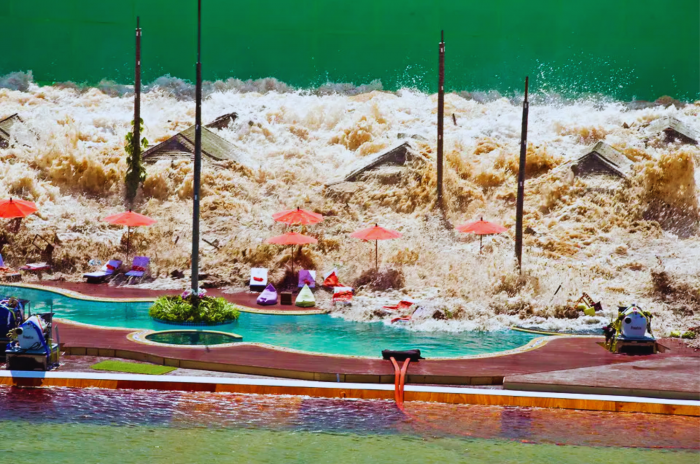
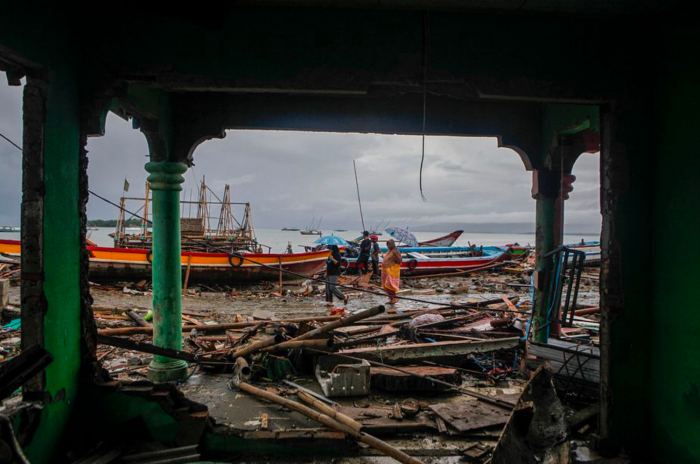
Tsunamis are a combination of high impact and rare events, they are call short-fuse events because they do not occur often. Consequently, tsunami events tend to be forgotten within a few generations. This is due to other frequently occurring events like storms and hurricanes in Puerto Rico. Even though tsunamis do not occur with regularity, these could cause catastrophic damage to human life. For this reason the ideal is to have an emergency and evacuation plans beforehand.
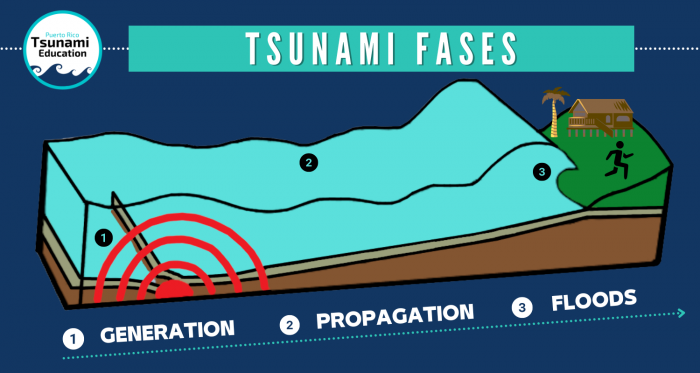
A real tsunami, unlike the sci-fi tsunamis portrayed in movies, is a wave sequence generated by a vertical displacement in the water column. This wave series can last anywhere from minutes to hours, which is why it is critical to implement evacuation procedures as soon as possible, until all regions are safe.
Tsunamis are composed of three phases:
A tsunami can be generated by a seismic event, a volcanic eruption, a landslide (in-land or marine), a meteor impact or a meteorological event.
The most common source of tsunamis are high magnitude seismic events or earthquakes. Usually, these earthquakes occur in subduction zones or convergence, where to tectonic plates collide. This collision could cause said displacement of the water column to a tsunami. In the other hand, in 1867 a tsunami occurred in the Anegada Passage (east of Puerto Rico) caused by an extension of the Caribbean Plate.
At that time, Tsunami Alert Centers could only estimate the magnitude and location of earthquake. This rapid information allows tsunami alerts to be created. As time passed by, scientists have determined that the key to a tsunami generation is the vertical displacement of the water columns. Noticing that, even though people associate earthquakes with tsunamis, tsunamis do not require an earthquake to form.
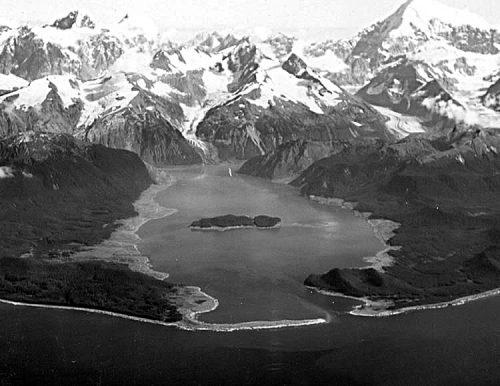
An example was at Lituya Bay, Alaska (1958). Where the unusual event was caused by a massive landslide that fell into the bay. The resulting wave surged up the slope on the opposite side of the narrow bay to a height of 518 m (1,700 ft.). The Lituya Bay tsunami was not generated by an earthquake, and it was contained within the Bay, so it didn’t travel across the Pacific Ocean.
Another potential source for earthquakes is volcanic eruptions. Just like landslides, the dangers of these cannot be monitored the same way of earthquakes. The most recent event on this type was in 2022. Where NOAA informs that when the Hunga Tonga-Hunga Ha’apai volcano erupted off the coast of Tonga in the South Pacific Ocean, generated a tsunami and triggered tsunami alerts around the world. It also explains how only about 5% of tsunamis are generated from volcanic activity (ITIC), making this a rare event captured by NOAA’s observing instruments.
About: Volcanic Eruptions
Some volcanic eruptions are explosive and others are not!
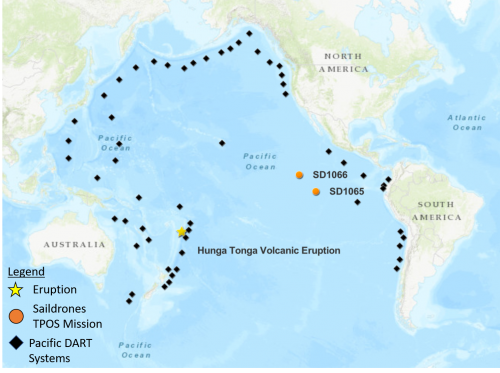
The meteo-tsunamis are a relatively new concept that relates a tsunami with changes in atmospheric pressure due to storm interacting with water bodies such as big lakes. A meteo-tsunami is a wave generated by a storm and it is propagated towards the coasts causing flooding. Where another potential source could be an unusual meteor impact in the ocean, where in this case, meteors or asteroids simulate the throwing of a rock in a bathtub, as there are changes in the vertical column and generates tsunamigenic waves.
The propagation is the second phase of a tsunami. A tsunami propagates in all directions and the velocity of the propagation depends on the water depth; the deeper, the faster. In the other hand, the shallower, the slowest. As waves arrive to shallow water, the tsunami decreases its velocity and increases the wave height. All of this depends on bathymetry, manmade structures, vegetation, coastal morphology and tides. For this reason it is important for scientist to develop detailed bathymetry maps to efficiently model possible tsunami scenarios.
The last phase is the flood, when the tsunami waves interacts with inland. Flood means the increase of water in the coastal zones due to tsunami waves. This causes fatalities and critical structure loss. Tsunami waves could impact, retrieve and comeback multiple times.
The flood phase is the most dangerous and fatal. An example of this is what happened with the Indonesian tsunami or the Japanese tsunami that occureed in Tohoku, Tokyo (2011). These events caused a significant loss of lives and learning from them is useful to mitigate future scenarios. This section focusses on how tsunamis impact structures, but the most important thing is to preserve human life.
The water contains amounts of forces that destroys structures. The Tohoku tsunami is an example because the water destroyed all manmade structures, they were washed away by the waves. The damage caused by a tsunami is related to the direct impact of the flood, the wave interaction with structures and the rapid erosion. It is important to mention that tsunamis carry debris that could be fatal. As water recedes and comes back, the debris start to clumps at or near the coast such as a boat stranded inland.
Secondary destructions includes: fires at refineries and industrial plants, critical infrastructure loss such as hospitals, bridges, communication lines and energy. The most known secondary impact was the nuclear disaster at Fukushima Daiichi in 2011. This disaster was a direct result of the tsunami, as waves overtopped the seawalls of the nuclear plant, causing a flood and a reactor meltdown. The moral of this story is to take in consideration secondary destructions into mitigation plans.
In the next lesson we will see the tsunami sources more prone to impact Puerto Rico and Virgin Islands.
Test your knowledge! Answer the following questions. You can review the correct responses by hovering your mouse over the boards with the word “Answer.”
1) generation 2) propagation 3) flood
The most common tsunami source is an earthquake. Other examples are: landslide, volcanism, meteorites.
Movies present a one-wave tsunami while real tsunamis are a series of long waves.
Seismic event, volcanic eruption, landslides, meteor impact, and/or a meteorological event.
The Flood Phase, because it creates a significant loss of not only structure, but also lives.
See the notification box below to apply what you learned. Afterward, you can choose to continue with the next module or take a break and come back at another time.
Analyze. Watch a tsunami movie!! We recommend The Impossible (2012) or The Wave (2015) because they are more realistic. Compare what happens in the movie with the material presented in this module (Example: preventative measure, damage caused and others).